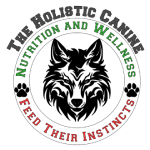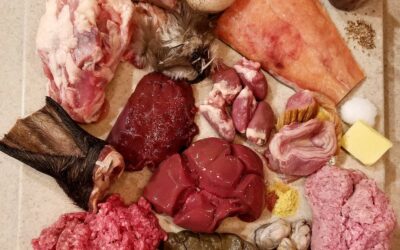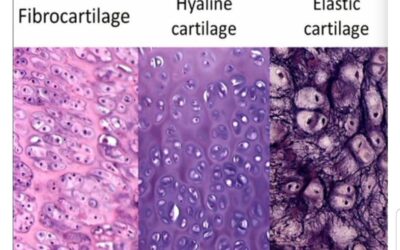A guide to cultivating optimal canine health
Naturopathic medicine recognizes several “doctors” that are vital for health. These “doctors” (also known as needs) are what I have coined facets of health. When it comes to both our health needs and the health needs of our dogs, there are specific requirements that are essential for the prevention of disease. These requirements contribute to the maintenance of optimal health and the consistent healing, repair, and detoxification of cells and body tissues. Depending upon the source, Naturopathy can have seven to ten facets of health. Over the many decades, I have formulated my own list of requirements for canine health based upon my decades of experience in the field of animal care and husbandry, education, and work as a holistic practitioner. I practice and teach ten facets of canine health that have proven to:
- prevent chronic disease in healthy animals
- assist in the healing and repair of disease and injury
- ameliorate conditions in senior dogs
- aid in the correction and mental balance of behavioral and emotional disorders
- produce and develop puppies into physically, mentally, and emotionally healthy, stable, and secure adult dogs
- produce healthier and genetically stronger offspring via naturally-reared breeding dams and sires
- palliate symptoms (significantly) of terminal disease that assist a dog to pass peacefully into eternity
My Ten Facets (doctors) of Canine Health are:
- Diet
- Water
- Air
- Sun & Earth grounding
- Exercise
- Fasting
- Passive activity: mental poise
- Instinct
- Rest
- Sleep

Diet plays an integral role in the health and function of the cells and body systems; cellular signaling, detoxification, and methylation; epigenetic expression; the health of the gut microbiome; and energy generation, output, and expenditure. Diet also directly impacts the health of the mind and emotions greatly influencing behavior.
A highly processed diet consisting of already unhealthy and inappropriate ingredients is a “dead” and dangerous food-product void of all moisture and nearly all vital micronutrients. Add to this the need for extreme heat to create a dried product and you now have the addition of cancer-causing carcinogens. Synthetically produced nutrients must then be sprayed onto the completed food-product to replace all that was already missing and those few nutrients then lost during the extreme processing of the ingredients. If these synthetic nutrients were not added, a dog consuming this food would die of a deficiency or disease condition within a very short period of time.
If this is not enough, processed food damages the gut while also carrying the risk of causing extreme injury to the wall of the intestines. This prevents the flourishing of a healthy gut microbiome. A damaged intestinal wall with a poor gut microbiome is a major driver of food sensitivities, poor digestion, reduced nutrient uptake, cellular damage, allergies, itching, poor immune health, autoimmune disorders, cellular inflammation, irritable bowel syndrome, inflammatory bowel disease, tumor growth, chronic disease, reduced cell signaling, emotional and behavioral problems, and so much more.
Since all kibble requires a starch to hold it together, most kibbles are laden with disease-causing carbohydrates, or worse, legumes and vegetable fibers that are not only causing damage to the gut and blocking the absorption of nutrients, but are also implicated in the rise in dilated cardio myopathy (DCM).
A fresh food diet, on the other hand, is a nutrition plan that is abundant in life-sustaining water to hydrate cells and alive and teeming with naturally-occurring nutrients, enzymes, factors, co-factors, and many other constituents not found in processed foods. A raw diet has the added benefit of being void of dangerous carcinogenic chemicals that would be produced from cooking proteins. Even more, raw foods feed and nourish the gut microbiome creating a near perfect symbiotic relationship that allows for optimal nutrient absorption and assimilation, increased cellular signaling, strengthened immunity, reduced inflammation, the prevention chronic disease, mental and emotional stability and poise, and the list goes on and on. The benefits of a stellar whole-food nutrition plan are incalculable!
When properly balanced by a nutrition professional such as myself, a home-prepared canine diet tops the list for cultivating and maintaining optimal health. Couple this with reducing meal and food frequency and you have an exceptional plan for increased longevity.

Water is an essential component of life and is best received through food. While dogs should always have access to a fresh, clean, pure source of water (preferably in a glass bowl), their food should be their main water source. A kibble diet is the leading cause of chronic dehydration which damages the kidneys and cells and causes cell death.
If your dog is on a kibble diet, he/she will be missing out on the most important source of hydration- their food. The water within food is called gel water (also known as structured or crystalline water) and is structured differently than simply H2O. Gel water has a chemical composition of H3O2 and is most similar to plasma. Since cells contain this same water structure, providing your dog with foods that are abundant in gel water ensures proper cellular hydration. Two of the best sources of gel water are collagen and bone broth. Collagen is found in proteins such as meat, skin, bones, marrow, tendons, ligaments, and cartilage, the main components of a canine diet. Adding in a homemade or high quality commercial bone broth is another excellent source of gel water.
Raw foods, as mentioned above, contain H3O2 water which is the same water contained within cells. Cells require a consistent source of water for adequate cellular function. If your goal is to produce optimal health, then you want to shoot for optimal cellular function, not simply adequate. Because cellular cytoplasm is composed mainly of water, this alone is ample reason to ensure your dog is properly hydrated. Additionally, the cellular plasma membranes made from fatty acids would not combine as the fatty membrane that houses and protects the cell without sufficient water. Water is also required to:
- transport nutrients from one cell to another,
- remove waste products from the body via urine, feces, and respiration (panting),
- transfer electrons such as in the production of ATP (adenosine triphosphate) which provides the energy to power other cellular reactions,
- perform enzymatic reactions,
- balance a cell via osmosis.
While drinking water is essential, it is not the most effective strategy to getting water into the cells. Most of the water your dog (and you!) drink is urinated out. Drinking water is effective for flushing the kidneys and diluting waste. But the water found within food is most effective for cellular hydration and therefore cellular function. Even more, the health of the cell membranes determine your dog’s ability to properly hydrate. Healthy cell membranes are produced by taking appropriate health care strategies most notably suppling a fresh food diet that is not inflammatory or laden with chemicals, hormones, and antibiotics.
Be sure to supply your dog with a consistent fresh clean source of drinking water. I recommend water filtered via reverse osmosis (RO) and supplied to your dog in a glass bowl (that is for a whole other article!). I highly recommend avoiding tap water. Even a simple carbon filter such as PUR® or Brita® is a MUCH better option than offering tap water.

Allowing your dog regular access to fresh clean air in the outdoors is essential for reducing toxin exposure. Be aware that walking and exercising your dog along roadways increases their exposure to toxic fumes such as carbon monoxide, sulfur dioxide, nitrogen dioxide, polycyclic hydrocarbons, benzene, and formaldehyde.
Many years ago, the Environmental Protection Agency (EPA) rated indoor air pollution as one of the top environmental risks to public health. In fact, indoor air pollution is one of the world’s largest environmental problems leading to a staggering 1.6 million premature deaths per year. Many pets are kept indoors for the majority of their lives. They may be being exposed to more pollutants in their indoor air than via exposure to everything else combined. If your pet does not have a ventilated area with fresh air, you must take immediate action to purify the air you breath inside your home for their health and for your own.
Reducing indoor air pollution begins with locating and knowing all sources of toxins. According to the EPA, the most common sources include asbestos, biological pollutants, carbon monoxide, formaldehyde & pressed wood products, lead, nitrogen dioxide, pesticides, radon, particulate matter, smoke/tobacco, stoves/heaters/fireplaces/chimneys, and volatile organic compounds (VOCs). VOCs include air fresheners, fabric softeners, aerosols, beauty products, perfumes, mattresses, wood glues, paints/stain, nail polishes/removers, cleaning supplies, repellants, cooking fumes, etc. And we cannot leave electromagnetic fields (EMFs) off the list. Wi-Fi, Smart Meters, electronics, numerous appliances, nearby cell towers and powerlines, etc. are all a growing concern and a leading contributor to creating a sick and unhealthy home.
Reduce, remove, and eliminate as many sources of indoor air pollution as you are able. Allow fresh clean air to regularly ventilate your home especially in the winter and summer months when heating and air conditioning systems are running 24/7. Change heating and AC filters regularly and use the most expensive filters you can afford. Open at least one window in sleeping areas and allow fresh air to circulate while you sleep (open windows a crack in the winter and summer to allow just enough air to circulate). Look into and purchase quality air purifiers and place them in areas where your pet sleeps, areas where your home sees the most activity from family members, and in bedrooms. Place live plants strategically around the home, but make sure they are either non-toxic or completely out-of-reach from your dog. Use genuine Himalayan salt lamps in all rooms of your home. And lastly, get yourself and your dog outside into nature as often as possible. Pre-dawn air has the highest saturation of oxygen. Take advantage of this healing air regularly. If you’re not a morning person (I’m not!), keep a window opened (or cracked) closest to your dog’s and your bed to take advantage of pre-dawn air while you both sleep!

Like water, without the sun, no life can exist. The sun is our planet’s main source of energy and is vital for the creation of food. Without sunlight, plants would not be able to create nutrients via photosynthesis. Herbivores consume the plants relying upon photosynthesis for their own nutrient needs. Omnivores and carnivores then depend upon the herbivores for their needs.
The sun is also required for vitamin D. While us humans and other animals can create adequate amounts of vitamin D from the sun’s radiation on the skin (provided exposure is sufficient), dogs create only a fraction of their daily nutrient need from sun exposure. They must rely upon the consumption of animals that can create a wealth of vitamin D.
The sun’s light energy is also essential for the stimulation and proper functioning of the pineal gland which is located in the brain. This gland is responsive to the sunlight via the eyes and modulates healthy sleep patterns. The gland’s primary function is the production of the hormone melatonin. While melatonin is the main hormone responsible for sleep, it also has various other functions in the central nervous system. One such role is protecting the health of the heart. There is also evidence that decreased pineal gland function increases risk for cancer in both animals and humans. Regular sun exposure is necessary for healthy pineal gland function which translates into health in the whole being.
While you and your dog are enjoying soaking up the rays, taking advantage of earth grounding is another benefit to getting outside. The earth is like an enormous electron-enriched battery that emits a delicate electrical charge. This charge is why electronics should always be grounded to the earth to prevent and protect against power surges and malfunctioning injury thus directing the power into the earth. The earth’s energy field is the world’s most powerful antioxidant! Allowing your dog to ground to the earth via their paws (and for you, your bare feet) on the grass, soil, sand, or shorelines allows the earth’s electrons to penetrate the pads of their feet. This balances their energy field (which is damaged by positively charged indoor and outdoor pollution and EMF exposure), gives them a huge dose of antioxidant protection, reduces pain and inflammations, lowers stress levels, encourages healthy sleep, and improves circulation.

Exercise comes naturally for dogs. Their bodies are perfectly designed for incredible feats of speed, strength, and endurance. Coupled with a species-appropriate diet, daily exercise creates a vibrantly healthy body that is free from disease and injury. Dogs experience euphoria when running and playing which encourages mental and behavioral balance.
One of the greatest benefits of exercise is the prevention of disease. Studies have shown that daily exercise prevents obesity, digestive issues, diabetes, and can help prevent the onset of arthritis and arthritic symptoms as well as cancer in dogs. Like humans, heart disease is a leading cause of premature death in dogs. In fact, nearly 8 million dogs in the United States have heart disease. Most canine heart disease is acquired, and sadly, studies have not shown that exercise is effective in preventing this devastating disease. However, exercise does strengthen the heart and lungs giving dogs a much greater fighting chance if heart disease becomes a reality. In the end, exercise does have tremendous value for strengthening the heart muscle and oxygenating body tissues.
Observation alone clearly shows how exercise increases lean muscle mass and reduces body fat percentage. Additionally, exercise prevents behavioral issues by giving dogs something to do that they enjoy thus preventing boredom and destructive behaviors and habits. Because exercise burns quite a bit of energy, it discourages hyperactivity giving dogs a sense of peace and mental calm which encourages deeper sleep patterns.
Probably the greatest benefit of exercise is increased longevity. The benefits of disease prevention, increased oxygenation of body tissues, and mental stability all serve to encourage and produce overall optimal health thus increasing the life expectancy rate of many dogs. And if you are out exercising with your dog, the benefits extend to yourself as well!

In the 1970’s, Dr. Herbert Shelton wrote his book, Fasting Can Save Your Life. This is one of the greatest health books I have had the privilege to read. Dr. Shelton fasted over 40,000 patients, one being Mahatma Ghandi, observing and recording the multitudinous benefits. Animals, knowing this by instinct, fast when their health requires it.
A domestic dog’s nutritional needs are controlled by their guardians, and unfortunately, many pets are the victims of premature death as a result. Dogs are not humans and do not require multiple feedings per day, especially when their food is processed commercial foods laden with chemicals, impurities, carcinogens, toxins, molds, pathogens, carbohydrates & starches, and synthetic nutrients. This is reason alone to rest your dog’s digestive faculties and allow for their body to detox, repair tissues, and eliminate damaged cells. Feeding one meal in a 24 hour period is an ideal plan.
Depriving your dog of nutrients for 48 hours initiates a process known as autophagy. Autophagy is the process that can save lives. During autophagy, the body consumes or removes dysfunctional, damaged, and redundant cellular components and recycles the cellular materials that are still functional. It is the body’s ultimate house cleaning process. Autophagy boosts immunity, reduces and prevents inflammation, and has proven to protect against cancer including stopping cancer growth, infections, neurodegenerative disorders, insulin resistance, inflammatory disease, and aging. Autophagy is the ultimate fountain of youth. If you’re not fasting your dog, it is time to start.

Refining mental poise is in no wise limited to humans alone. Animals experience emotions just as we do and can act impulsively and intensely when their mental and emotional needs are not being met properly and in a healthy manner. Like us, dogs need to engage in daily activities and feel they have a sense of purpose.
Boredom can be a very real problem for the modern canine who spends most of his or her day inside, cooped up, and left alone for long hours. Dogs need to have things to do and engage in just as we do or mental, emotional, and behavioral issues may manifest. Dogs need to engage in those activities that are unique to canines. Our dogs are not human children, they are animals that have specific needs, behaviors, conducts, interests, and pursuits, all of which need to be respected and/or met to some degree or another. Because dogs experience the very same pleasure hormones as humans, they require opportunities to experience the release of these hormones on a regular basis. It is not only the respectable thing to do, it is humane.
Domestic dogs are closely related to their wild counterparts and their needs are no less similar. Behavior may have adapted to life with humans, yet our pets still enjoy engaging in the same canis lupus activities as their wild cousins. Chewing, chasing, hunting, digging, barking, howling, herding, guarding, watching, protecting, searching, and so much more can be observed to some degree in every domestic dog. Expecting your dog to act like a human is unreasonable and preventing them from being a dog is downright cruel. It is for this reason many dogs are mentally, emotionally, and behaviorally unstable.
Dogs have a physiological need to chew. Providing your dog with raw meaty bones is the best option as this is what they are designed for. Studies show that chewing releases powerful neurotransmitters that stimulate brain function and increase blood flow to the brain. Chewing also stimulates the trigeminal nerve responsible for movement of the jaw muscles and transmitting sensory information to your dog’s skin, sinuses, and mucous membranes. As a result of chewing, behavioral problems are prevented, or in the very least reduced if a behavioral concern exists.
While some doggie activities may not mesh with our lifestyles or household rules and expectations, such as digging craters in the yard and unearthing your garden shrubs, giving your dog opportunities to engage in agreeable activities on a daily basis is necessary for a mentally and behaviorally healthy and happy dog.

Recognizing and then respecting that your dog was born with innate abilities, known as instincts, facilitates in your dog a sense of confidence and security especially when you are sympathetic to certain behaviors that may not be agreeable or amusing to you as their guardian. Dogs are animals and that needs to be respected and appreciated.
Most instincts in nearly all animals are centered in survival. Your dog is no different. Your dog may demonstrate powerful drives that are triggered by outside circumstances. These behaviors are innate, however, they can also be shaped and intensified through experience. Unreasonable fear is often the result of experiences that have intensified their innate fight or flight response. Strong territorial behavior and overly protectiveness are other examples of instincts that have not been shaped in a healthy manner. These can often be produced by owners naively punishing behaviors rather than gently correcting an instinct with the goal of tempering the innate reaction or response.
Negative instinctive behaviors and reactions can also be the result of an imbalanced home environment or one filled with stressful stimuli. A stable, respectful, and peaceful environment allows your dog’s innate natural abilities to produce strong mental and behavioral harmony, confidence, and poise that brings both joy and benefit to you as their guardian and to your dog’s overall health and wellbeing.

Adequate rest is essential for re-centering and rebalancing and is not limited to the physical body alone. True rest involves the relaxation of the body, mind, emotions, and the soul. Our dogs are not exempt from needing proper rest for their entire being. Resting the physical body is straight- forward, but the resting of the remainder may not be so obvious.
Physical rest is no challenge for dogs who sleep most of their day. Even a dog who is active and engaged in work and play knows when it is time for a nap. However, physical rest alone is only part of your dog’s whole being. Resting your dog mentally is also just as vital. Training, socialization, competition, and performance work require your dog’s mental attention and engaged thought processes. Overly training, socializing, and working your dog can create mental strain and fatigue leading to emotional and behavioral issues. A mentally imbalanced dog is an unhealthy dog.
Resting your dog’s emotions and soul involves knowing their stimulus. Stressors and over stimulation from young family members or younger pets such as puppies and kittens can be emotionally draining to your pet. This effects the heart of your dog’s very being, his or her soul. This type of overstimulation can result in depression and anxiety or even a lack of will. Removing or limiting stressors and disturbances is a considerate act while providing a private place for retreat and sanctuary is essential for emotional wellbeing for the benefit of your canine’s soul.

Dogs are experts at sleeping! According to Dr. William Thomas, “dogs sleep 48% to 58% of the time.” Dogs can sleep anytime and anywhere making sleep an effortless feat. Despite this fact, dogs still require periods of undisturbed sleep and the ability to develop and abide by their body’s natural circadian rhythm.
A natural circadian rhythm is established by the sun and your dog’s exposure to it. If your dog resides indoors, be sure to allow sunlight to fill the interior of your home. Reduce yours and your dog’s exposure to LED lighting at night in your home. Use incandescent bulbs or yellow light rather than white light. This will keep the pineal gland healthy and ample amounts of melatonin will be produced. It is also a very good strategy plan for all family members and pets to turn off Wi-Fi at night during sleep. Remove all electronics from sleeping areas and turn cell phones to airplane mode. Reducing electromagnetic fields (EMFs) to a minimum is an important step in reducing exposure and maintaining a healthy home and sleep pattern.
Like us, dogs experience different stages of sleep. If you watch your dog while they sleep you will likely observe moments of deep sleep where they experience Rapid Eye Movement (REM) and dream. Many dogs act out their dreams by moving their limbs and even barking. These deep periods of sleep are necessary. During sleep, a dog’s heart rate drops and their breathing slows down. This is to conserve energy and is vital for the maintenance and repair of body tissues. Undisturbed nighttime sleep is an essential component for a healthy, well mannered, and happy dog.
©2019 Kimberly Lloyd, PhD, BCHHP, Cert Raw Dog Food Nutritionist and Holistic Animal Healer



